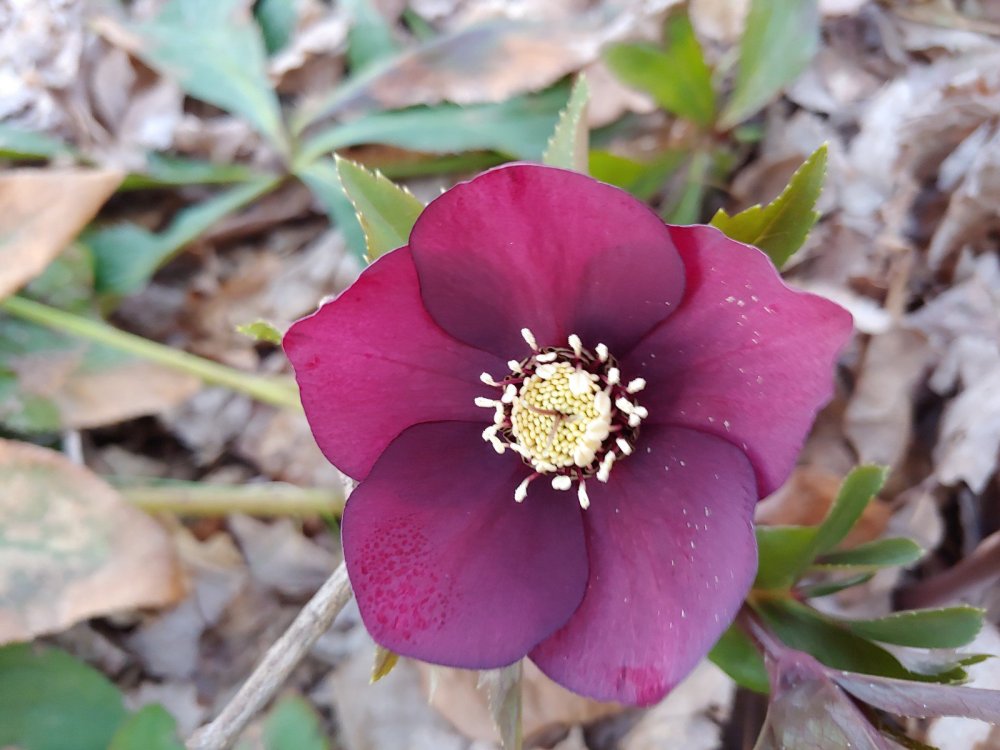I tire quickly reading monthly or seasonal lists of chores that must be accomplished in the garden. Certainly, lists are appreciated by some, but I’ve no doubt that lengthy lists can be a discouragement to casual gardeners to even get started. I readily ignore admonishments and go about my business, doing just enough in early spring to keep the garden from becoming a shambles, and then growth starts and covers most every inch of ground, hiding evidence that the multitude of chores listed to be done in March were neglected.

Despite my reluctance, there are tasks that even I must do, so on the first mild days over wintered foliage of perennials is cut to the ground and the deepest piles of leaves in the wooded parts of the garden are shredded and spread. In this more than an acre garden, and all by my lonesome when it comes to labor, this is more than a few hours, and more than a few weekends in March. But, often I jump the gun to combine new projects, and already I’ve planted a few things and delayed a few tasks that should have been done on that last warm day.
A year ago, dry ground in late winter allowed cutting shallow trenches along the edges of planting beds to encourage better drainage, long before the first weed was pulled or perennial cut. An additional thirty inches of rain last year still made the rear garden a swamp, but I insist it would have been much worse without my digging in February. Despite a chilly March, the basic tidying was finished roughly on schedule.

March is a typical time for many gardeners to add a layer of mulch to their garden beds. There’s science and a practical aspect to substantiate this, but it’s a chore and an expense that I do without. Unquestionably, a cover of hardwood or chip mulch (or pine straw) makes the garden more tidy, retains moisture, and helps to minimize weeds, but I accept a degree of untidiness (or a lot), and I’d rather spend the mulch budget on another twenty ferns or trilliums to dress up the creek. (That’s on the neighbor’s property, but they’re three hundred yards up the hill, and I see this every day. Turning this area of brush and brambles into garden has been a project in recent years that will continue until I’m told to stop.)

Parts of the garden with fewer trees get only a light cover of leaves from the scattered Japanese maples and dogwoods (and others), and cuttings of foliage that is cut and left to decay. Why isn’t the garden a weedy mess? Parts are, I suppose, for awhile, until trees and shrubs come into leaf, and perennials planted in between come to life. A few areas are still filling in along the edges, but again the budget is working on more planting instead of mulch. Plants are selected along the borders hoping that they’ll out compete weeds, and if one doesn’t, maybe another will.
Would the garden be better if I added a few inches of mulch every year or two? Perhaps, but just like organic mulches, the cover of leaves breaks down, improving the soil, and few who visit would argue that plants in this garden appear to be lacking anything, particularly from the essential to do lists.
The massive valley oak next door to where I lived in town provided more natural mulch than I knew what to do with. It prevented weeds from growing in unused ground. If I needed some soil amendment, I just took off the top layer, and took what was below. It was rad.
Leaves of maples and tulip poplars are easily shredded, and break down quickly in the spring even when they’re left whole. Leaves of sycamores that blow in from the neighborhood are a nuisance. Too big, and slow to decay.
Sycamores have that unpleasant tomentum on them! We must dispose of truckloads of it from one of our landscapes, and the trees are still young.